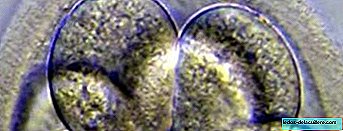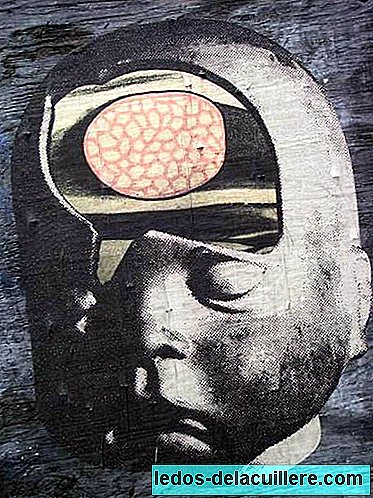
As has been seen with the specific language disorder, in speech therapy we find many terminological confusions. And the dysphasia It wasn't going to be different.
However, labeling a particular child should not be of great concern, since each one is different, and the treatment must be consequently, that is, individualized. Although it is true that, among professionals, it is necessary to have a useful term when sharing experiences and establishing a first contact.
Today we will talk about dysphasia: definition and features of difference, etiology, symptoms, evaluation, intervention and prognosis.
Definition and difference features of dysphasia
In the absence of known etiology or defined symptoms, there is no choice but to make a definition by exclusion, that is, for what it is not, pointing out its limits with other known language disorders.
Therefore, the main features of dysphasia differentiation They are:
- Importance of the delay in the appearance of the first language: the appearance of the first words after three years, the first combinations of words after four years and the persistence of schematic language beyond six years, indicate a gravity that places the child far from the delay of language.
- Abnormalities in the development of the different stages of language: complex words appear, appropriate for their age, coinciding with the absence of simpler words that correspond to early ages (for example, know the word surgeon, but not a doctor or doctor), as well as some simplification of the phrase and omission of determinants , articles ... (agramatism).
- There are problems of understanding and expression
- Existence of associated disorders: attention difficulties, psychomotor delay ...
- Slow evolution
In reality, everything depends on each child; in some, linguistic difficulties are predominant; in others, they are only one of several disorders that affect the child.
Causes of dysphasia
There is no univocal cause of the generalized disorders in the dysphasia table, although it is possible to talk about possible relational and environmental aspects, basic constitutional factors (brain damage), possible genetic origin ...
Symptoms of dysphasia
It has always been very difficult to come up with a clear model that describes the different symptoms in severe language development disorders. This is because they occur throughout the evolutionary process and change their appearance over the years; In addition, they depend on the level of the child's abilities, as well as the quality of family interactions.
Therefore, different attempts at classification have been suggested to allow a more accurate description of symptoms. For example, we can distinguish children who talk a lot with relevant ideas, children who talk a lot but who have difficulty adapting to the context, children who speak little but with pertinent information and, finally, children who speak little and whose language is not very operative.
Several descriptive features have also been proposed that can be applied to the child's language, independent of the possible cause that causes language difficulties:
- not understand the language although it can communicate with natural gestures, being its expression null or almost null, even in repetition.
- present great difficulties in the articulatory organization of sounds and words; Their statements are limited to one or two words, of difficult intelligibility, without improving in repetition. At its extreme limit, the child can become dumb.
- there may be some ease of production, but with very little clarity and intelligibility. There is a remarkable improvement in the quality of articulation of sounds in repetition of syllables or short words.
- understanding is better than expression, although there are difficulties to understand when the statement is long, includes complex structures, is ambiguous, is decontextualized or is issued quickly. In addition, in expression, there are difficulties in articulating the sounds, fluency, learning and use of links.
- there are big problems of articulation of words, being the understanding of them normal or almost normal (not that of phrases). There are many muffins, interruptions, mistakes ... as well as difficulties in maintaining the sequential order of the sentence.
- It is possible to present an initial development of language within the more or less normal limits and not present speech problems, or only slight difficulties. Your prayers are also well structured. However, they have difficulties in understanding, highlighting the lack of adaptation of their language to the environment (the coherence of the topic being discussed is unstable, there may be repetitions of words and even sentences ...)
These aspects are not a typical classification of dysphasia, but possible forms that serious alterations in language development may present.
Regarding the symptoms that are not linguistic, it should be noted that some cases of dysphasia are within a mental deficit, although its importance does not allow to justify the absence of language or the tremendous difficulties of learning it.
Problems or alterations are often observed in the discrimination of sounds, in memory, in attention, in fine motor activities (making strokes with a pencil on roads, coloring pictures, buttoning buttons ...), alterations in body schema and lateral dominance (right or left handed) and in visospatial perception; alterations in social behavior and emotional reactions seem to depend more on the environment than on the symptoms.
Dysphasia intervention
The most important thing is to identify the most altered processes and also those that have been best developed to build the best individualized treatment for each particular case.
Rather than trying to correct defects or eliminate barriers, programs must adapt to each peculiar case of learning that these disturbances define.
It is important to facilitate access to language by the child through privileged communication situations (such as individualized speech therapy sessions), in which he can clearly receive the linguistic elements that his difficulty does not allow him to extract from the normal stimulation of the environment. The nonverbal symptoms must also be taken into account and thus reconstruct the basis of language acquisition and its early stages.
Alternative and augmentative communication systems are increasingly used, not as a last resort against the failure of other intervention strategies, but early when there is a high risk of absence or almost absence of oral language development, since they not only allow an alternative communication, but favor the appearance or improvement of oral language.
Conclusion
Dysphasia is a disorder composed of numerous non-linguistic deficits associated with language disorders, although it is not known whether as a cause, consequence or different manifestations of the same original problem or the combination of several disorders.
Therefore, an intervention must be initiated through a relationship of a therapist, a child and a family. An attempt will be made to make a global stimulation that addresses linguistic, psychomotor, cognitive and / or social disorders.
Although there are many possible evolutions, we must be aware that the dysphasia constitutes a group of serious disorders whose recovery is long. However, the differential diagnosis is difficult to establish before 6 or 7 years, but the importance of the problem and its consequences advise an intervention after 3 years if possible.
The important is prevent possible cases of dysphasia from losing important years or receiving inadequate treatments, since they have assimilated another type of disorder.












